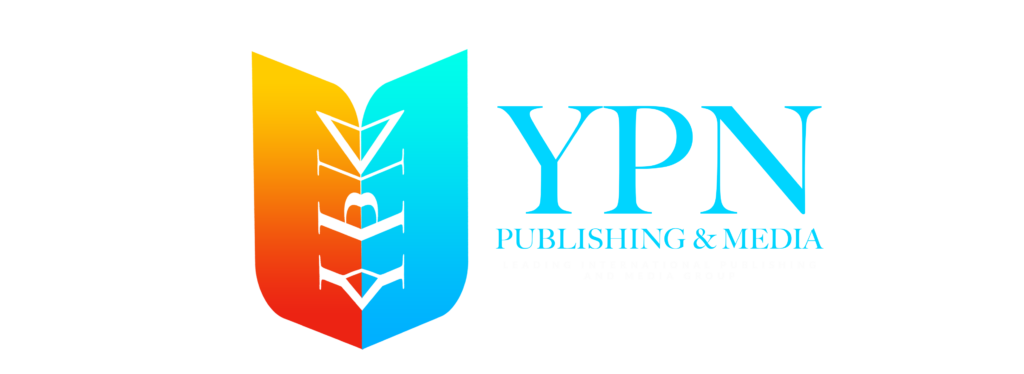The publishing landscape is evolving at an unprecedented pace, offering remarkable opportunities for authors looking to transform their passion for writing into a sustainable and profitable career. The emergence of digital platforms, AI-powered writing assistants, and advanced marketing strategies has revolutionized the way books are created, published, and sold.
In 2025, the industry is expected to witness even more groundbreaking innovations, making it one of the most promising years for aspiring and established authors alike. Self-publishing platforms have lowered barriers to entry, enabling writers to reach global audiences without the need for traditional publishing gatekeepers. Meanwhile, AI-driven tools are streamlining content creation, editing, and book promotion, helping authors save time and enhance the quality of their work.
Moreover, social media and influencer marketing have become powerful tools for book promotion, allowing authors to connect directly with their readers, build engaged communities, and boost sales. From email marketing campaigns to book funnels and audiobook production, new strategies are emerging to help writers maximize their book’s reach and revenue potential.
Whether you are a first-time writer eager to publish your debut book or a seasoned author looking to scale your publishing success, staying updated on the latest trends and leveraging the right tools will be crucial. By understanding the evolving landscape and implementing effective writing, marketing, and monetization strategies, you can position yourself for success in the ever-growing world of publishing.
Step 1: Start with a Winning Book Idea
Your book’s success begins with a compelling idea. Whether you are writing fiction, nonfiction, or a self-help book, selecting a topic that resonates with your target audience is crucial.
How to Identify a Profitable Book Idea:
- Analyze Bestsellers: Research books in your genre that are performing well on Amazon, Kindle, and other publishing platforms.
- Use Google Trends and Keyword Research: Understanding what readers are searching for can help shape your book idea.
- Engage with Potential Readers: Interact with your audience on social media, blogs, and forums to gauge interest in your topic.
Step 2: Plan and Structure Your Book
A well-structured book keeps readers engaged and ensures that your message is delivered effectively.
How to Outline Your Book Effectively:
- Introduction – Hook your readers with an intriguing opening and explain the purpose of your book.
- Main Content – Organize your chapters in a logical and compelling manner.
- Conclusion – Summarize key takeaways and provide a strong call to action.
Outlining your book beforehand will make the writing process smoother and help prevent writer’s block.
Step 3: Write with Readability and Engagement
Good writing is more than just putting words on a page; it’s about keeping your readers engaged.
Writing Best Practices:
- Use a Conversational Tone: Write as if you are speaking directly to your readers.
- Tell Stories: Storytelling makes your content more relatable and engaging.
- Break Up Long Texts: Short paragraphs, bullet points, and subheadings improve readability.
Step 4: Optimize for SEO and Discoverability
If readers can’t find your book, they won’t buy it. SEO and metadata optimization play a crucial role in book discoverability.
SEO Strategies for Authors:
- Use Keyword-Rich Titles and Subtitles: Incorporate words that readers are searching for.
- Optimize Your Amazon Book Description: Make it compelling and keyword-optimized.
- Select the Right Categories and Keywords: This ensures your book appears in relevant searches.
Step 5: Design a Professional Book Cover
Your book cover is the first thing potential buyers see—make it stand out!
Design Tips:
- Use bold typography and high-quality images.
- Ensure it reflects your book’s genre and theme.
- If necessary, hire a professional designer to create a visually appealing cover.
Step 6: Write a Compelling Book Description
A well-crafted book description can persuade readers to purchase your book.
How to Write a Persuasive Book Description:
- Start with a Hook: Capture attention within the first sentence.
- Highlight the Benefits: Explain what readers will gain from reading your book.
- Include a Strong Call to Action: Encourage readers to buy the book or download a sample.
Step 7: Build Pre-Launch Buzz
Successful books don’t just appear out of nowhere—they are strategically marketed before launch.
Pre-Launch Strategies:
- Build an Email List: Capture potential buyers early on.
- Offer Sneak Peeks: Share sample chapters to generate excitement.
- Distribute Advance Reader Copies (ARCs): Gather reviews before your official launch.
Step 8: Execute a Powerful Book Launch
Your launch strategy can make or break your book’s success.
Book Launch Strategies That Work:
- Run Limited-Time Promotions: Offer discounts or free downloads to boost initial sales.
- Organize Virtual Book Tours: Appear on podcasts, blogs, and social media live streams.
- Secure Media and Podcast Features: Get exposure through interviews and media appearances.
Step 9: Monetize Beyond Book Sales
Your book can generate multiple streams of income beyond just sales.
Ways to Monetize Your Book:
- Create an Online Course or Workshop: Expand on your book’s content.
- Offer Coaching or Consulting Services: Position yourself as an expert in your field.
- Sell Audiobook and Translation Rights: Reach a wider audience.
Step 10: Keep Marketing and Scaling
The work doesn’t stop after launch—ongoing marketing is essential for long-term success.
Long-Term Promotion Strategies:
- Run Amazon and Social Media Ads: Keep your book visible to new readers.
- Engage with Your Audience: Use social media, email newsletters, and book clubs.
- Expand into Public Speaking and Collaborations: Turn your book into a personal brand.
Final Thoughts: Turn Your Book into a Bestseller
Writing, marketing, and monetizing a book in 2025 demands a well-thought-out strategy, consistent execution, and unwavering persistence. With the ever-evolving publishing industry, authors must leverage the right tools and tactics to stand out in a competitive market.
To begin with, writing a compelling book starts with thorough research, clear structuring, and engaging storytelling. Whether you’re crafting fiction or nonfiction, understanding your target audience and delivering value through your content is essential. AI-powered writing assistants, editing tools, and beta reader feedback can refine your manuscript and enhance its quality before publication.
Marketing your book effectively involves building an audience before and after launch. Social media, email marketing, and influencer collaborations can help create buzz and attract potential readers. Utilizing SEO-optimized book descriptions, Amazon ads, and book funnels will ensure your book gains visibility on major platforms. Additionally, leveraging podcasts, guest blogging, and book giveaways can drive further engagement.
Monetization goes beyond just book sales. Expanding revenue streams through audiobooks, online courses, memberships, and speaking engagements can turn a single book into a long-term income-generating asset. Platforms like Kindle Direct Publishing (KDP), subscription-based models, and licensing deals provide authors with various monetization options.
By implementing a strategic approach to writing, marketing, and monetization, you can maximize your book’s potential and create a sustainable author career. Staying adaptable to new trends and consistently engaging with your audience will ensure lasting success in the dynamic world of publishing.
Get Exclusive Publishing Insights!
Want expert strategies to boost your book sales? Subscribe to YPN Publishing & Media Group for exclusive insider tips, industry updates, and proven techniques to turn your book into a bestseller. Stay ahead with expert marketing insights, publishing trends, and powerful strategies that help authors succeed.



